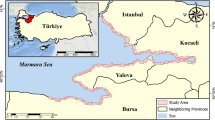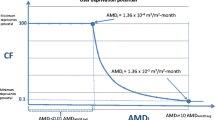Abstract
There is no alternative to the world’s water resources, and their increasing scarcity is making it difficult to meet the world population’s water needs. This paper presents a sustainable water resources system (SWRS) and analyzes the operating mechanism that makes it possible to evaluate the status of such a system. A SWRS can be described as a complex coupling system that integrates water resources, social, economic and ecological systems into a whole. The SWRS’s operating mechanism is composed of dynamic, resistance and coordination components, and it interacts with and controls the system’s evolution process. The study introduces a new approach, set pair analysis theory, to measure the state of a SWRS, and an evaluation index system is established using the subsystems and operating mechanism of a SWRS. The evaluation index system is separated into three levels (goal level, criteria level and index level) and divides the index standard into five grades. An evaluation model of the SWRS based on set pair analysis theory is constructed, and an example of SWRS evaluation in Shanghai is presented. The connection degrees of the index in the three levels are calculated, and the connection degree of the goal index is calculated to be 0.342, which classifies the city’s SWRS condition as grade 2. The sustainable use of water resources in the region is determined to be at a relatively adequate level that meets the requirements of sustainable development.
Similar content being viewed by others
References
Durand J D. Historical estimates of world population: an evaluation. Population and Development Review, 1977, 3(3): 253–296
Means E G, West N, Patrick R. Population growth and climate change will pose tough challenges for water utilities. Journal-American Water Works Association, 2005, 97(8): 40–53
Jun K S, Chung E S, Sung J Y, Lee K S. Development of spatial water resources vulnerability index considering climate change impacts. Science of the Total Environment, 2011, 409(24): 5228–5242
Wei W, Shi P J, Zhou J J, Feng H C, Wang X F, Wang X P. Environmental suitability evaluation for human settlements in an arid inland river basin: a case study of the Shiyang River Basin. Journal of Geographical Sciences, 2013, 23(2): 331–343
Morrison J, Morikawa M, Murphy M, Schulte P. Water Scarcity & Climate Change: Growing Risks for Businesses & Investors. A Ceres Report, 2009, 3–6. Available online at http://www.thesapientsolution.com/research/20090525_Water_Scarcity_and_Climate_Change_thesapientsolution.pdf (accessed December 10, 2013)
Brundtland G H. Our Common Future: Report of the World Commission on Environment and Development. Oxford: Oxford University Press, 1987
Feng S Y. the Water Resources System Engineering. Wuhan: Hubei Science and Technology Press, 1991 (in Chinese)
Chaturvedi M C, Srivastava D K. Study of a complex water resources system with screening and simulation models. Water Resources Research, 1981, 17(4): 783–794
Loucks D P. Quantifying trends in system sustainability. Hydrological Sciences Journal, 1997, 42(4): 513–530
Cocklin C, Blunden G. Sustainability, water resources and regulation. Geoforum, 1998, 29(1): 51–68
Wouters P, Rieu-Clarke A. Sustainability criteria for water resource systems. Resources Policy, 2001, 27(2): 139–140
Sandoval-Solis S, McKinney D C, Loucks D P. Sustainability index for water resources planning and management. Journal of Water Resources Planning and Management, 2011, 137(5): 381–390
Loucks D P. Sustainability Criteria for Water Resource Systems. Cambridge: Cambridge University Press, 1999
Xu Z X, Takeuchi K, Ishidaira H, Zhang X W. Sustainability analysis for Yellow River water resources using the system dynamics approach. Water Resources Management, 2002, 16(3): 239–261
Fowler H J, Kilsby C G, O’Connell P E. Modeling the impacts of climatic change and variability on the reliability, resilience and vulnerability of a water resource system.Water Resources Research, 2003, 39(8): 1222–1232
Khranovich I L. Stability of functioning of water resource systems. Water Resources, 2007, 34(5): 485–495
Li Y, Lence B J. Estimating resilience for water resources systems. Water Resources Research, 2007, 43(7) W074227
Yang G, He X L, Li J F. The evaluation method study for water resources sustainable utilization in arid areas. International Journal of Chemical Engineering and Applications, 2010, 1(4): 359–362
Shilling F, Khan A, Juricich R, Fong V. Using Indicators to Measure Water Resources Sustainability in California. Cincinnati: World Environmental and Water Resources Congress, 2013, 2708-2715
Smith E. Water resources criteria and indicators. Water Resources Update, 2004, 127: 59–67
Wang H M. Theory and Method on Sustainable Development System of Basin. Nanjing: Hohai University Press, 2000 (in Chinese)
Melloul A, Collin M. The principal components statistical method as a complementary approach to geochemical methods in water quality factor identification; application to the coastal plain aquifer of Israel. Journal of Hydrology (Amsterdam), 1992, 140(1–4): 49–73
Tian Y M, Lv X R, Cui Y H. Evaluation of water resources value based on fuzzy comprehensive method. In: International Conference on Energy and Environment Technology (ICEET 2009), Guilin. Guilin: IEEE COMPUTER SOC, 2009, 549–552
Guo L, Gao X P, Song H F. Study on Fuzzy Comprehensive Evaluation Method to Determine Safety Grade of Water Resources. In: Progress in Safety Science and Technology 2006, Changsha. Beijing: Science Press, 2006, 1483–1488
Kingston G B, Lambert M F, Maier H R. Bayesian training of artificial neural networks used for water resources modeling. Water Resources Research, 2005, 41(12): W12409
Zhao K Q. Set Pair Analysis and its Preliminary Application. Hangzhou: Zhejiang Science and Technology Press, 2000, 4–8, 83–88 (in Chinese)
Peterson H M, Nieber J L, Kanivetsky R. Water resources sustainability indicator. application of the watershed characteristics approach. Water Resources Management, 2013, 27(5): 1221–1234
Song S B, Cai H J. Assessment methods and indicator systems for sustainable use of regional water resources. In: Proceedings of International Conference on Water-Saving Agriculture and Sustainable Use of Water and Land Resources 2003, Yangling. Yangling: Water Saving Agriculture and Sustainable Use of Water and Land Resources, 2003, 677–682
Wang W S, Jin J L, Ding J, Li Y Q. A new approach to water resources system assessment-set pair analysis method. Science in China Series E: Technological Sciences, 2009, 52(10): 3017–3023
Srdjevic B. Linking analytic hierarchy process and social choice methods to support group decision-making in water management. Decision Support Systems, 2007, 42(4): 2261–2273
Coyle R G. A Mission-orientated approach to defense planning. Defense Analysis, 1989, 5(4): 353–367
Yang X H, Zhang X J, Hu X X, Yang Z F, Li J Q. Nonlinear optimization set pair analysis model (NOSPAM) for assessing water resource renewability. Nonlinear Processes in Geophysics, 2011, 18(5): 599–607
Author information
Authors and Affiliations
Corresponding author
Rights and permissions
About this article
Cite this article
Du, C., Yu, J., Zhong, H. et al. Operating mechanism and set pair analysis model of a sustainable water resources system. Front. Environ. Sci. Eng. 9, 288–297 (2015). https://doi.org/10.1007/s11783-014-0642-4
Received:
Accepted:
Published:
Issue Date:
DOI: https://doi.org/10.1007/s11783-014-0642-4




